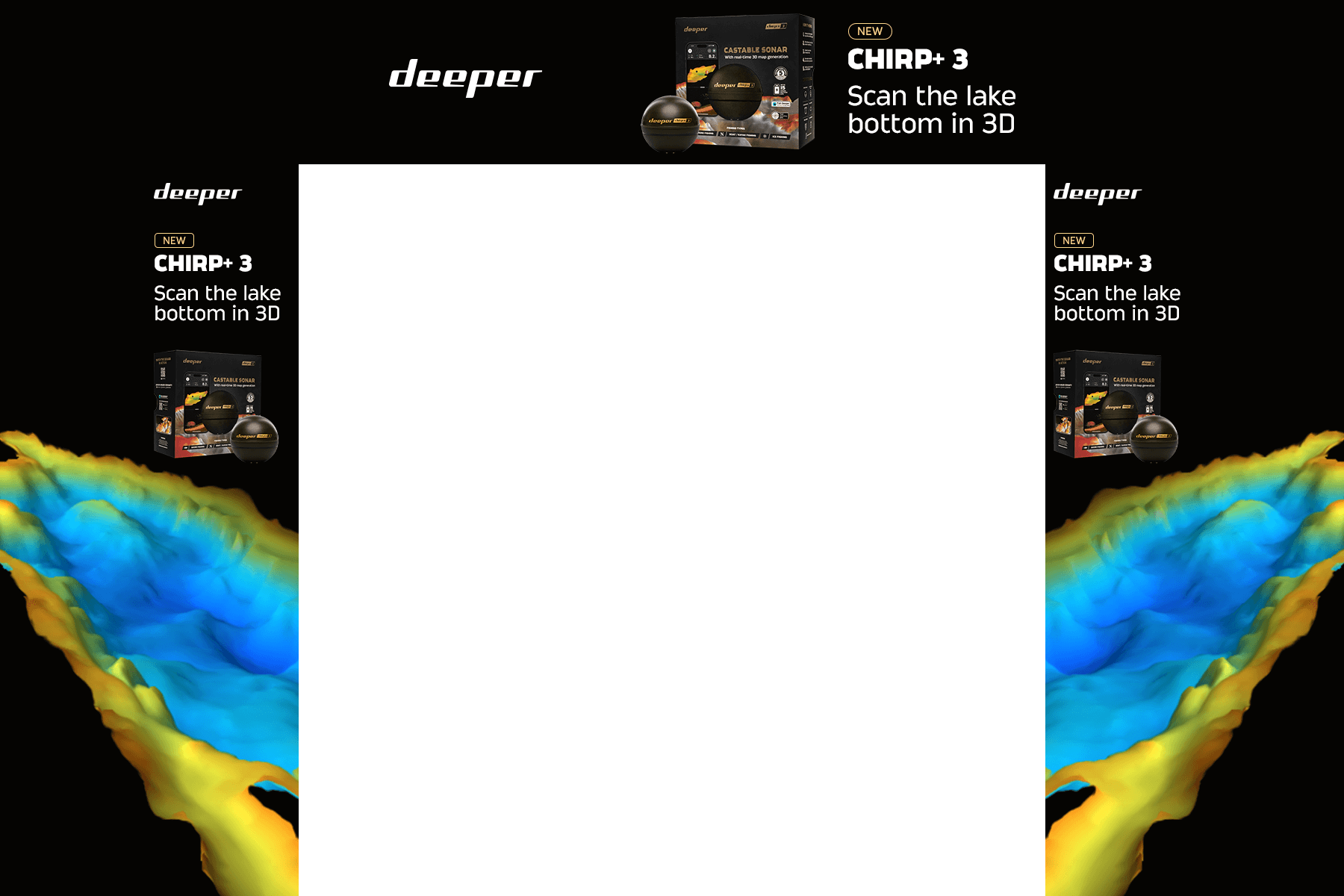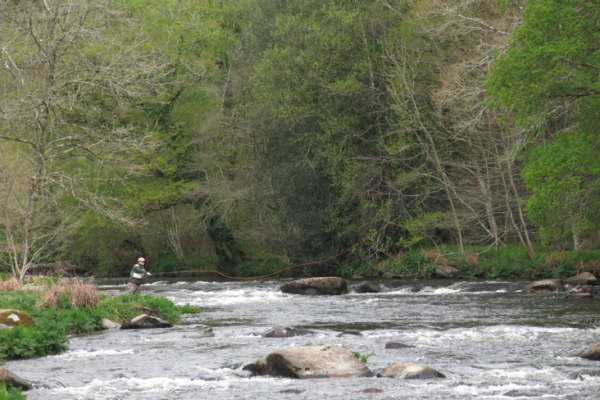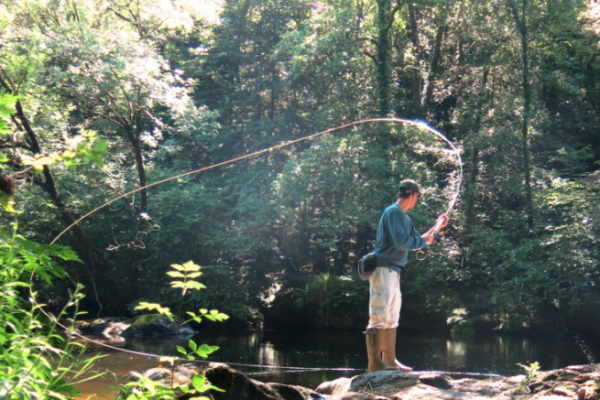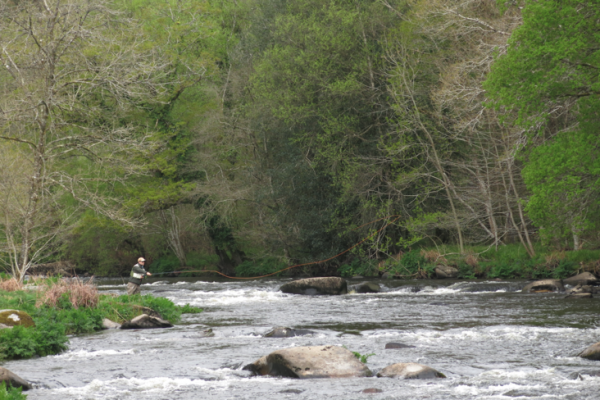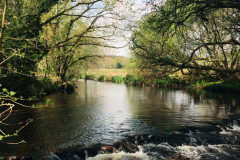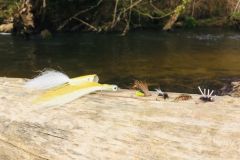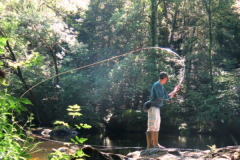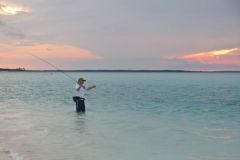Publicité
Throws for every situation
The Spey Cast allows you to prospect a river and fish from both banks, with the wind blowing up or down the river, in virtually any situation.
In this way, the angler can really place his fly wherever he likes and effectively prospect and fish for both migratory and other species (salmonids, predators). It's a casting technique that's not reserved exclusively for one type of fish.
In order to be able to cast from both banks and with an upstream or downstream wind, several casts were invented with the appearance of this technique, including 4 main casts:
A) The simple Spey
B) The Double Spey
C) Snap T / Circle C
D) The Snake Roll
Spey casts can be divided into two categories. Airborn anchor casts (A and D) are very discreet and efficient, with little line laid on the water, and waterborn anchor casts (B and C). The latter are noisier and less discreet, as more of the line is laid on the water and will be "plucked", creating a spray of water which contributes greatly to loading the rod.
These casts can be used with the steering hand at the top or bottom of the handle, depending on whether you're right- or left-handed. Depending on the shore you're on and the wind direction, you'll need to use the appropriate cast for safety and comfort.
There are therefore two right-hand throws at the top (B and D) and 2 right-hand throws at the bottom (A and C) will be made on the right bank depending on wind direction. 2 left-hand throws at the top (B and D) and 2 left-hand throws at the bottom (A and C) will be made on the left bank depending on wind direction. It is of course possible to cast with crossed arms for anglers reluctant to use their non-steering hand.
Throws B and C are fairly simple to learn, and the best place to start is with these, as the timing is less important, and they tolerate certain errors.
The A and D casts are much more difficult to learn, as timing and coordination are very demanding and unforgiving of mistakes. The single spey is the most widely used cast in the world for sending a fly the right distance by changing direction. It's important to work on it in order to acquire it.
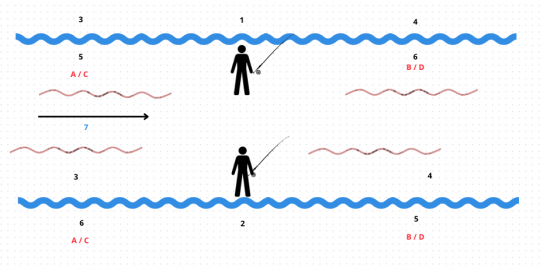
1-Left bank
2- Right bank
3- To be used with the wind coming up the river
4- To be used with the wind blowing down the river
5- Right hand up
6- Left hand up
7- Current direction
A- Simple Spey
B- Double Spey
C- Snap T or Circle C
D- Snake Roll
A casting technique with many advantages
To master this complex art of casting, you need to spend many hours at the water's edge and correctly acquire these 4 indispensable casts, or at least 1 cast with an upstream anchor and one with a downstream anchor on each bank. This may seem daunting, but once you've mastered them, you'll quickly realize the many advantages and possibilities they bring to the way you fish and prospect a river.
One of the first advantages is that you can change direction (from 30° to 90° or more) and send your fly to the other bank from a (starting) line position parallel to the bank you're on. This is not possible with rolled casts.
The second, and by no means least, advantage is that you can cast with little recoil and thus reach spots sometimes overlooked by anglers who don't use this technique.
The third and final major advantage is to be able to cast far without tiring too much, of course if you've got the technique right, so once again you can go and find fish where few other people are able to present them with a fly.
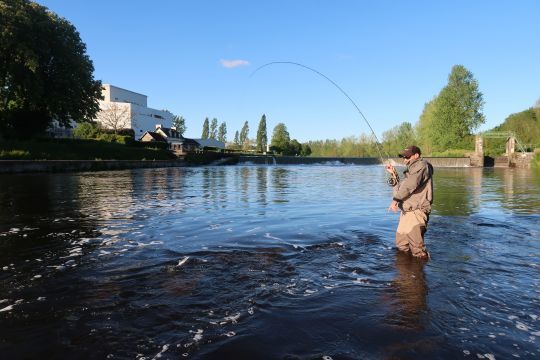
A demanding technique
When learning the Spey Cast, there are many mistakes that limit our results. They are often due to poor acquisition of the gesture and failure to respect the steps of each cast, which must be performed in a very precise order.
- Start with the rod low and raise the rod (often at 45°) to loosen the line and anchor it in the right place.
- Rotate the body at the right moment to change direction.
- Place your line anchor in the ideal position (upstream or downstream of your body and target, depending on the cast).
- Load the rod with progressive, dynamic acceleration until the rod stops in the 13h/11h position (depending on the bank and the hand used).
- Form a dynamic loop with a minimum of silk on the water
- Achieve an efficient "shoot" with a short, powerful acceleration until the rod stops at 11/13 (depending on the bank and the hand used). Ideally, use both hands to optimize leverage and rod power.
All these casts require certain qualities, notably impeccable coordination and synchronization. The most important thing is to respect the casting steps and to use your rod, which must cast in response to the commands/instructions you have previously given it.
How can we improve?
You need to practice regularly, and don't hesitate to call on professional fishing guides, clubs or acquaintances to help you learn or improve. Books, DVDs and videos on the Internet can help you progress, but in practice, it's all about identifying your mistakes and self-correcting until you get the perfect cast that starts effortlessly and lands far, precisely and delicately.
Where to train?
Several French instructor-guides offer Spey Cast courses, as do some clubs. But be sure to use the right people.
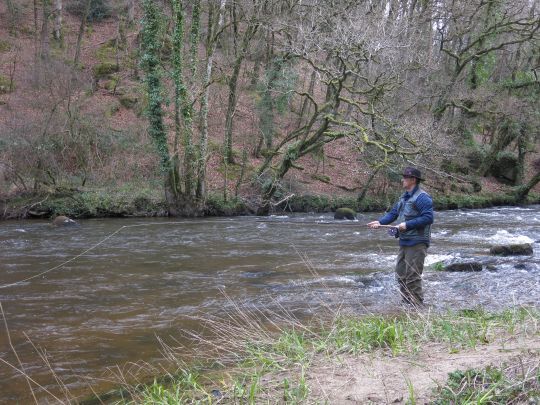
DVDs and books to consult
DVD : Rio's Modern Spey technical casting by Simon Gawesworth
This DVD is extremely well done and highly educational. A must-have for beginners and experts alike.
Book : Spey Casting by Simon Gawesworth
Book : Single Spey casting by Simon Gawesworth
Publicité
Publicité
Publicité
